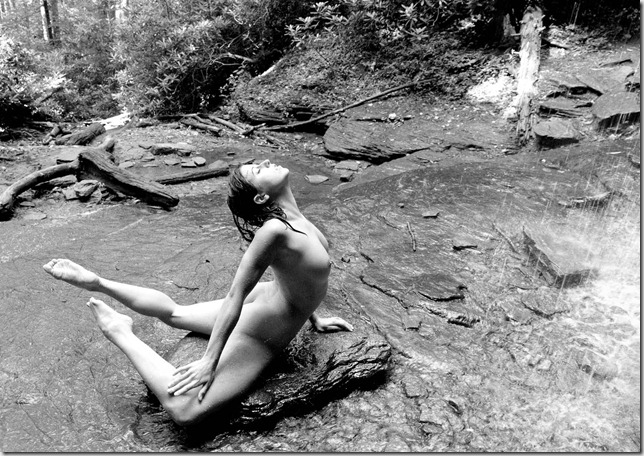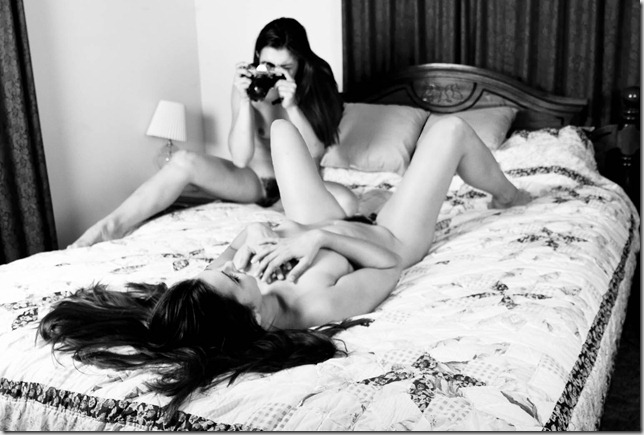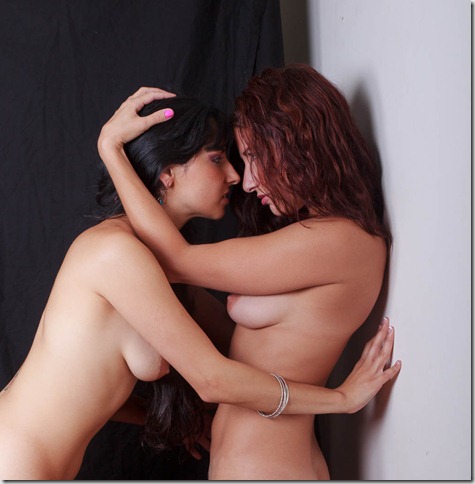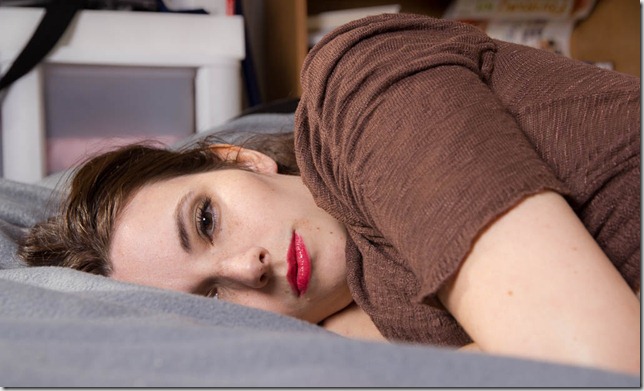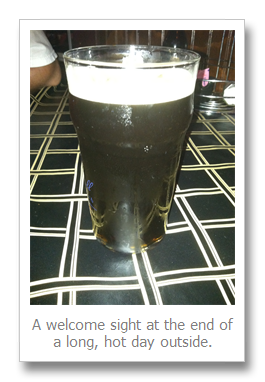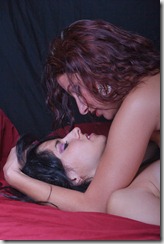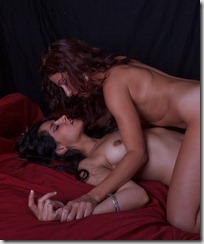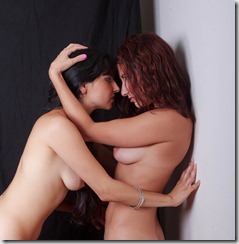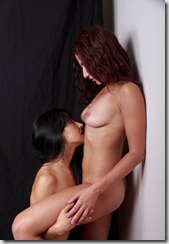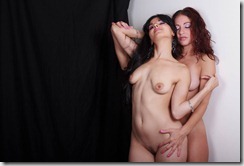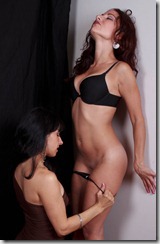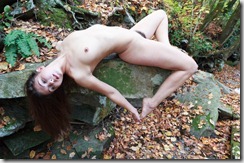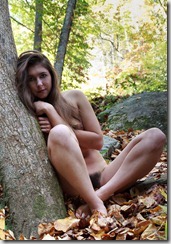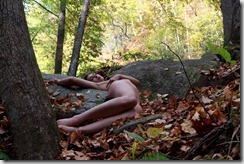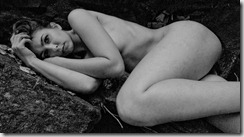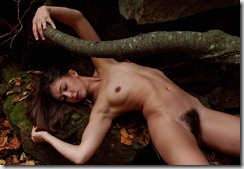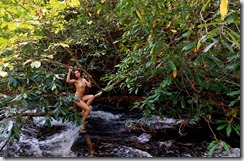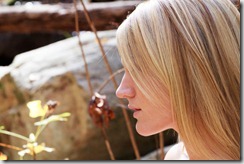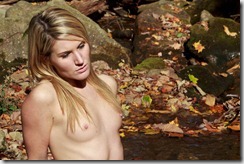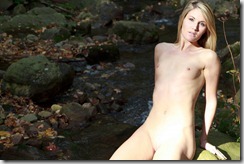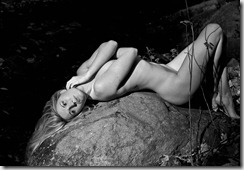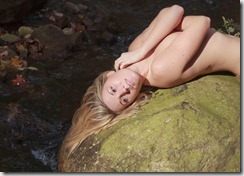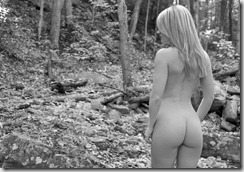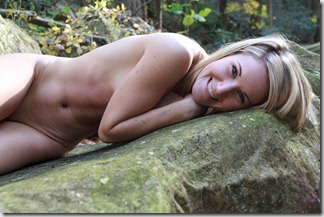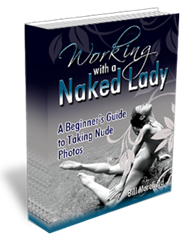Below is a sample chapter from my eBook Working with a Naked Lady coming out December 14. You can find out more information about the eBook at http://www.workingwithanakedlady.com/.
Let me begin by stating that equipment doesn’t matter as much as you think. I don’t mean that equipment is unimportant. I can be a tech head as much as anyone and spend hours discussing the differences between megapixels, sensor sensitivity, and lens specs. I will spend hours researching any technology related purchase to make sure I find the one that is just a little better.
The truth is that you can have the best equipment and still take crappy photographs. Great images are being taken every day with camera phones and simple point-and-shoots. Equipment is a necessity, but knowing how to use your equipment is far more important than the brand or model of your equipment. To take the photos you have in your mind’s eye, you will rarely find your equipment to be the most important tool. Knowing what you want to capture and having a plan to do this are more important.
You generally get what you pay for when buying photographic equipment. I suggest frugality when starting out. In most cases lenses, cameras, and lights that cost more do so because they have better quality, more capability, faster recovery time, or more features (though there are always exceptions). As a beginner you probably don’t need many of these more advanced features. Starting with a beginner DSLR will be adequate. The key is to buy solid equipment when starting out that you can expand and grow as your needs increase. Be smart about spending money to get the best bang for your buck.
There are many brands of good cameras and other equipment out there and I’m not going to get into what brand is better because ultimately it doesn’t matter. You can go out and buy the same guitar and amplifier as Eddie Van Halen or Stevie Ray Vaughn, but when you play it’s still going to sound like you playing the guitar. Likewise you can buy the exact same camera gear as another photographer, but you will be the one taking the photos. You need to know and learn how to get the most out of your equipment. Technical ability is the start, not the end of producing work that you’re proud to show others.
We’ll begin with the most basic, and most necessary, of the photographer’s tools, the camera.
I divide cameras in three types. The first type is the point-and-shoot camera that is usually small and self-contained. These cameras are generally designed to be simple to operate and compact enough to take everywhere. They are targeted at casual shooters and work great for the types of photos that most people want to capture – memories of time spent with friends and family. These cameras will make most of the decisions for you and get decent shots most of the time.
The second type of camera is the camera built into most new cell phones. Many cell phones now contain a camera nearly as capable as a point-and-shoot camera. They also have the advantage of being almost always with you without carrying a second device.
The third type of camera, and the one we’re most concerned with, is the SLR or single lens reflex camera. These are named for the mirror system that directs light from the lens to either the viewfinder or image sensor/film. When the camera uses an image sensor instead of film, they are usually referred to as digital SLR or DSLR cameras. I will largely reference DSLR cameras in this eBook for the times that I reference a camera. Most of the concepts here are just as appropriate for a film SLR and many even will be relevant to a point and shoot camera or camera phone.
The first obvious difference of the DSLR from the other types is that the DSLR camera will feature lenses that can be changed. This allows you to choose a lens depending on the type of photos being taken, a feature referred to as interchangeable lenses. The greatest advantage of the SLR and DSLR comes from this ability to change lenses to match the needs of your shoot. While many better point-and-shoot cameras will let you tweak exposure settings, a SLR will give you more options and a greater range of settings that give you more control and flexibility. Most SLR and DSLR cameras also offer a mode that works similar to the point and shoot and makes most of the decisions for you.
You’ll want the extra functionality that a DSLR offers, but don’t feel that you need to buy the top of the line pro model and a dozen different lenses before you take a single photo. Start small and keep things affordable. Buy a good, basic DSLR to start with and look for a kit that will includes a basic lens in one package. If you want to splurge, spend the extra money on a better lens. Be aware you can easily spend more on your second or third lens than you did for your camera body. By starting small you can learn your equipment. When you start to hit the limitations of the equipment you have, you’ll know it’s time look at an upgrade.
New cameras and lenses come out everyday. Any advice that I give here will be outdated by the time you make it to this page of the eBook. I suggest looking at reviews of the current equipment. Some resources for sites that I currently like and use when considering new purchases are listed on the web site for this eBook under Book Resources. Reading a number of sites to get a variety of opinions will serve you well as every reviewer will have biases and preferences that influence reviews. Before you buy a camera you should definitely hold it in your hands to make sure you like how it feels and can work the buttons and controls easily. Cameras are one of the items that you really need to touch and try before you buy.
I suggest that you ignore film when starting. That may seem sacrilege to many, but the truth is that learning with digital will be a simpler process. As a photographer of the nude you can’t just drop your photos off at the local pharmacy to develop. You will likely need to find a specialty developer willing to work with nudes or learn to develop your own photos. Developing your own photos will require a darkroom space, chemicals, and equipment. I primarily work in digital, but do own and occasionally use a film SLR. If you feel the desire to move in that direction, by all means follow that interest at some point. Starting with digital will still make things easier while learning.
And just for the record, I use a Canon camera.
Without a lens, your DSLR is just a camera body. As mentioned under cameras, you will often find kits offered that pair a camera body with a basic lens. The job of the lens is to collect light and bring it to the sensor in the camera. As a photographer there are two primary aspects of a lens you should be concerned about: focal length and aperture.
Focal length, usually measured in millimeters (mm), notes the distance from the center of the lens to the sensor when focusing at a point an infinite distance away. Because of the way lenses are manufactured this might not be the physical center of the lens. Think of it as a measure of the field of view or how much of what’s in front of you the camera will capture. A lens with a low focal length will capture a wide field of view or a wide angle of the scene in front of you. The scene will also appear further away. In fact you can capture a wider angle than you can see with the unaided eye. A lens with a high focal length will zoom in to a scene and show you a narrow field of view. The scene will also appear closer to the viewer. A lens with a low focal length will also be called a short lens and one with a high focal length will also be called a long lens.
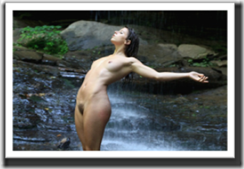
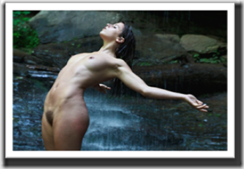
Photo 3 – In both these images the model and I remained at same location, but I changed the focal length. I shot the photo on the left at 40mm and the photo on the left at 51mm. Notice that the objects in the photo taken with a larger focal length appear larger and that background objects in that photo appear closer to the model.
If you wanted to take a picture of an entire valley from a mountain, you would use a short lens and therefore a wide angle. If you wanted to take a picture of just a cabin in that valley you would use a long lens. Generally a focal length of around 50mm is considered to record a scene the way the naked eye sees it.
There is a complication on focal length specific to digital cameras. The focal length of a lens generally is given relative to the traditional 35mm film size. To reduce cost, many digital cameras use a sensor smaller than this 35mm size. The smaller sensor results in what is called a crop factor. This is the ratio that the smaller sensor changes the focal length of the lens. For my Canon T2i this ratio is about 1.6 which means that a lens showing a focal length of 50mm will actually function as 50mm x 1.6 or 80mm would on a 35mm sensor. The result is that I get a tighter field of view than I otherwise expect for the focal length of the lens with this camera. Therefore if I want a result of a 50mm lens on a cropped sensor, I must use a lens showing a smaller focal length. On my 1.6 ratio camera, this means I’d need to use a 50 mm / 1.6 or about a 30mm lens.
Using a lens with a small zoom will make objects appear further apart in distance from the camera than a long zoom of the same scene. Think of a wide angle as stretching the distance between objects in the scene while a zoomed lens compresses this distance and makes objects appear closer together. You can use this to either shrink or stretch the apparent depth of your scene.
Some lenses have a fixed focal length that cannot be varied. These lenses are referred to as prime lenses. Other lenses will transition through a range of focal lengths and are known as zoom lenses. Zoom lenses are popular because of the flexibility, but this flexibility comes with some loss of clarity since the lens must work through a larger range of settings. You also will usually find a smaller widest aperture in a zoom lens compared to a fixed lens of similar cost.
We will discuss aperture later, but for now know that a lens will usually be marked with the largest aperture it will support. A fixed lens will have a single number, while a zoom lens will usually state the largest aperture the lens supports at each end of the lens’s zoom range. You will hear the terms fast and slow to describe a lens. This is in reference to the maximum aperture of the lens. A lens with a maximum aperture of f/5.6 is slower than one with a maximum aperture of f/4.5. A greater maximum aperture produces a faster lens.
For most work I use a zoom lens with a range of 18mm to 135mm. In addition I often use 24mm and 50mm fixed lenses. Those fixed lenses have a larger maximum aperture than the zoom lenses allowing use in darker conditions or to produce a smaller depth of field.
Each camera brand usually has a specific mount and only lenses made for that mount will work with the camera. Camera manufacturers generally only produce lenses for their specific camera and these usually work across models. Many third party lens makers produce their lenses with a mount compatible with each of the major camera brands. You can also find adapters that will let you use some lenses, especially older film SLR lenses, with older mounts on newer cameras. These adapters usually do not support the automatic features the lens offers such as automatic focusing.
A better lens will provide more improvement in the quality of your photos more than a better camera body. You will be better served upgrading your camera lenses before buying a new camera body. In fact when you start running into limitations in your equipment you likely will find it in the kit lens before the camera that you bought with the lens. As long as you stay with cameras with the same mount (generally the same brand) then your lens investment will come with you as you buy new camera bodies in the future. The one exception will be if you buy a lens specifically designed for cameras with a cropped sensor and you later purchase a camera with a full size sensor. In this case the lens may no longer work.
Each photo that you take will require an amount of memory to store on the camera. The device that the photo is stored onto is known as a memory card. A few cameras include a small amount of built in memory to store images, but you will want or need a memory card to store the images taken by your DSLR camera. There are two common types of memory cards you’ll find in digital cameras. The first is the small, thin SD card and the second the larger Compact Flash card. They are not interchangeable. You should make sure which type your camera uses before buying a memory card.
The camera sensor size is measured in megapixels. While many photo formats use compression to reduce the size of the photo, you can assume that the megapixel gives a good indication of the size of each photo captured by your camera. Most memory cards will state on the packaging the approximate number of images they hold for a given megapixel camera. I suggest buying at least two memory cards as it will give you a spare to use if you fill up one during a shoot or one malfunctions during a shoot. Swapping cards only takes a few seconds while copying images off a card can take several minutes.
Memory cards will be rated with a maximum speed they can transfer data. A faster card allows data to be written more quickly and therefore clears the camera buffer more quickly for new data. You will want a higher speed card if shooting images in fast succession with your camera often called “burst mode.” If shooting video on your DSLR, you will likely find it requires a minimum card speed. The manual for your camera will provide this information. On my Canon T2i a class 10 card or better must be used for video.
I’ve known photographers who use a different card for each set and then let the photos copy off the card while they begin the next set of images. This minimizes the risk of losing photos if a card goes bad. I do believe it’s a good idea to get the images off a card as quickly as possible and I never erase the images off a card until I’ve verified they copied correctly.
You can conduct successful shoots with those three pieces of equipment. After you have worked for a while you will likely find two items that you may want look to add to your equipment. One will be artificial light sources and the second will be a light meter. Both of these we will discuss in the section of this eBook on light.
No matter what equipment you own you must learn to use it. As boring as it may be, read the manual that came with your camera, flash, or other equipment. If you don’t like the manual (or as happens too often happens the manual was badly written or translated) most popular brands of cameras have books that delve into the operation of your specific model of camera. There may be features that would be valuable, but not obvious from the controls. Ultimately equipment is your tool in photography. You would learn to properly work your new chainsaw before trying to cut down a tree, and you need to learn your camera equipment properly. While you are less likely to cut off your leg if you don’t read your camera manual, you are just as likely to not get the results you want.
